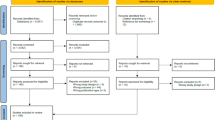Abstract
Diagnostic radiology has an image problem. In its effort to develop a better understanding of benefit–risk in medical radiology, data on potential risks associated with medical imaging have been welcomed into the medical community. As such, risk perspectives and mantras from the occupational health profession have been adopted and applied to patients. These perspectives often focus on risk with only casual, incidental, or no reference to the benefits experienced by patients. These occupational health viewpoints have accumulated over decades, have overshadowed a very limited perspective about the benefits of medical X-rays, and have become an integrated part of our profession. This review argues that the medical profession should abandon perspectives on risk that are adopted from occupational health professions and focus on perspectives that realistically focus on the medical benefit–risk for patients.
Similar content being viewed by others
References
Redberg RF, Smith-Bindman R (2014) We are giving ourselves cancer. New York Times, 30 Jan 2014
Grannins FW Jr (2014) Evidence is weak on NY Times editorial on radiation risks. www.AuntMinnie.com, 11 Feb 2014. http://www.auntminnie.com/index.aspx?sec=log&URL=http%3a%2f%2fwww.auntminnie.com%2findex.aspx%3fsec%3dsup%26sub%3dcto%26pag%3ddis%26ItemID%3d106457. Accessed 6 April 2014
Mettler FA Jr, Thomadsen BR, Bhargavan M et al (2008) Medical radiation exposure in the U.S. in 2006: preliminary results. Health Phys 95:461–686
Hricak H, Brenner DJ, Adelstein SJ et al (2011) Managing radiation use in medical imaging: a multifaceted challenge. Radiology 258:889–905
Radiation Effects Research Foundation. Report Series (1993–2013). http://www.rerf.jp/library/archives_e/rrtoc.html. Accessed 6 April 2014
Kendall GM, Little MP, Wakeford R et al (2013) A record-based case–control study of natural background radiation and the incidence of childhood leukaemia and other cancers in Great Britain during 1980–2006. Leukemia 27:3–9
MacMahon B (1985) Prenatal X-ray exposure and twins. N Engl J Med 312:576–577
Pearce MS, Salotti JA, Little MP et al (2012) Radiation exposure from CT scans in childhood and subsequent risk of leukaemia and brain tumours: a retrospective cohort study. Lancet 380:499–505
Mathews JD, Forsythe AV, Brady Z et al (2013) Cancer risk in 680,000 people exposed to computed tomography scans in childhood or adolescence: data linkage study of 11 million Australians. Br Med J 346:1–18
Campbell JA (1976) X-ray pelvimetry – useful procedure or medical nonsense? J Natl Med Assoc 68:514–520
Kelley KM, Madden DA, Arcarese JS et al (1975) The utilization and efficacy of pelvimetry. AJR Am J Roentgenol 125:66–74
Gray JE, Hoffman AD, Peterson HA (1983) Reduction of radiation exposure during radiography for scoliosis. J Bone Joint Surg Am 65:5–12
Ardran GM, Coates R, Dickson RA et al (1980) Assessment of scoliosis in children: low dose radiographic technique. Br J Radiol 53:146–147
Kuppermann N, Holmes J, Dayan P et al (2009) Identification of children at very low risk of clinically important brain injuries after head trauma: a prospective cohort study. Lancet 374:1160–1170
Conflicts of interest
Dr. Wagner declares a financial interest as a partner in RM Partnership and has no investigational or off-label uses to disclose.
Author information
Authors and Affiliations
Corresponding author
Rights and permissions
About this article
Cite this article
Wagner, L.K. Should risk from medical imaging be assessed in the absence of benefit and vice versa?. Pediatr Radiol 44 (Suppl 3), 414–417 (2014). https://doi.org/10.1007/s00247-014-3018-9
Received:
Accepted:
Published:
Issue Date:
DOI: https://doi.org/10.1007/s00247-014-3018-9




